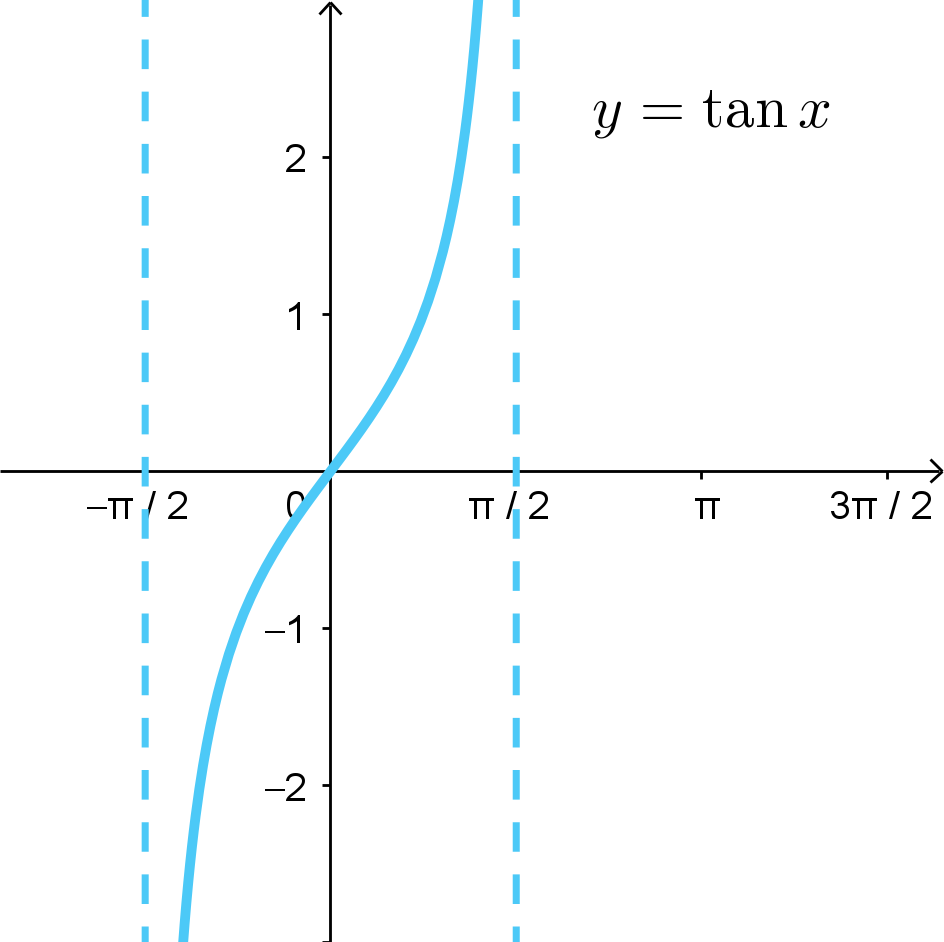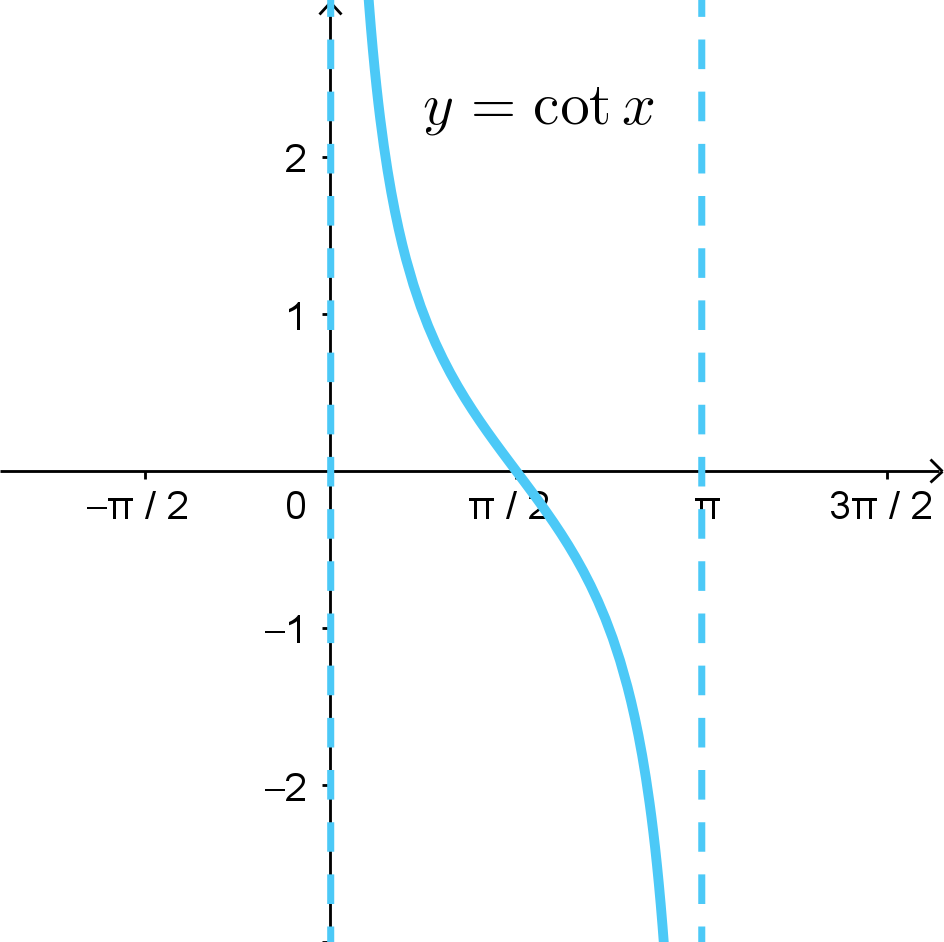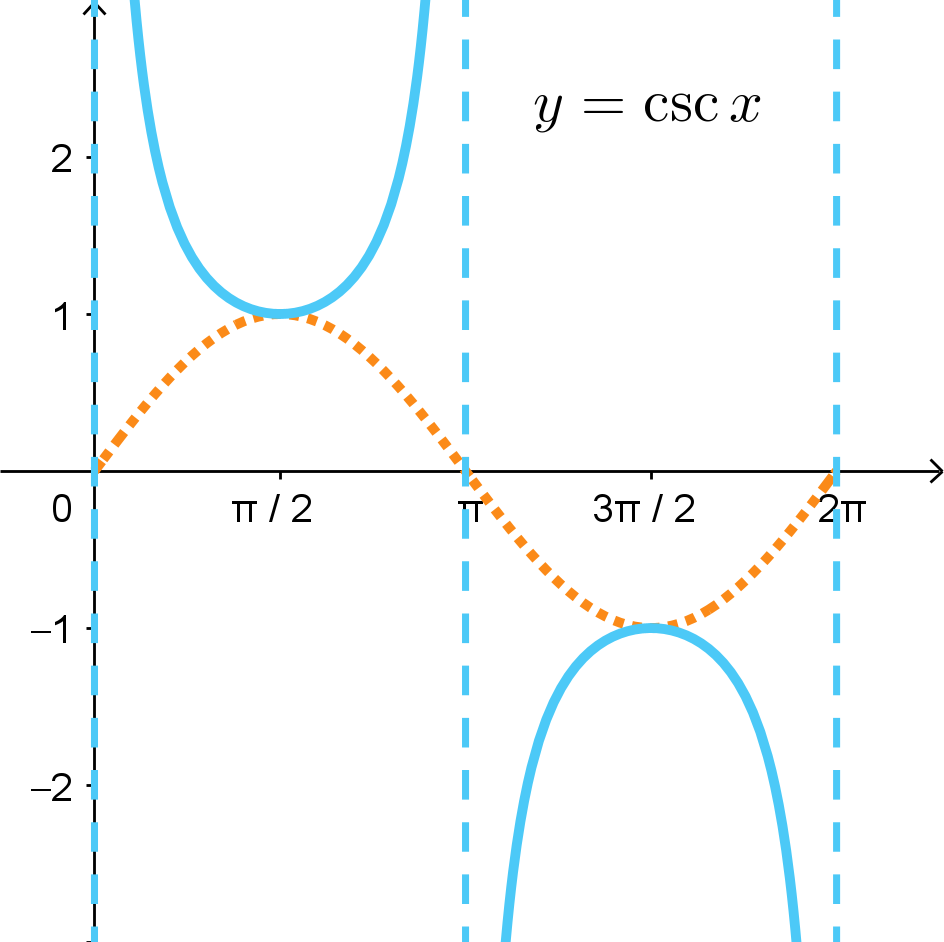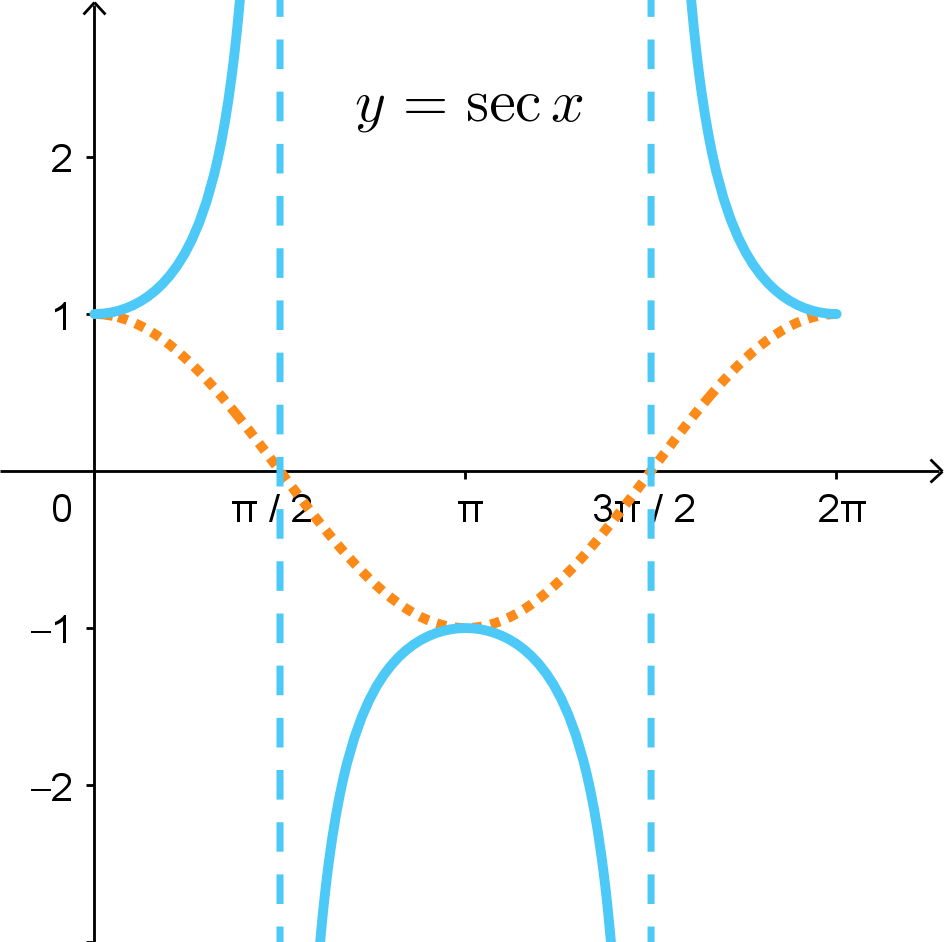
Graphing Trig Functions
Trigonometric Functions

Trigonometric Functions
Now let's look at the graphs of the other 4 trig functions.
You should familarize yourself with the following information for each of the trig functions and their graphs.

The period length of \(y = \tan{x}\) is \(\pi\). The base 1-period portion of the graph is over the interval \(\left(-\frac{\pi}{2}, \frac{\pi}{2}\right)\). It will repeat forever as \(x \rightarrow -\infty\) and \(x \rightarrow +\infty\).
The domain of \(y = \tan{x}\) is all Real numbers except odd integer multiples of \(\frac{\pi}{2}\), which result in vertical asymptotes. So, there are vertical asymptoes at \(... -\frac{5\pi}{2}, -\frac{3\pi}{2}, -\frac{\pi}{2}, \frac{\pi}{2}, \frac{3\pi}{2}, \frac{5\pi}{2}, ...\). The range of \(y = \tan{x}\) is \((-\infty, +\infty)\).
Note that \(y = \tan{x}\) is always a increasing function.

The period length of \(y = \cot{x}\) is \(\pi\). The base 1-period portion of the graph is over the interval \((0,\pi)\). It will repeat forever as \(x \rightarrow -\infty\) and \(x \rightarrow +\infty\).
The domain of \(y = \cot{x}\) is all Real numbers except integer multiples of \(\pi\), which result in vertical asymptotes. So, there are vertical asymptoes at \(... -3\pi, -2\pi, -\pi, 0, \pi, 2\pi, 3\pi, ...\). The range of \(y = \cot{x}\) is \((-\infty, +\infty)\).
Note that \(y = \cot{x}\) is always a decreasing function.

The period length of \(y = \csc{x}\) is \(2\pi\). The base 1-period portion of the graph is over the interval \((0,2\pi)\). It will repeat forever as \(x \rightarrow -\infty\) and \(x \rightarrow +\infty\).
The domain of \(y = \csc{x}\) is all Real numbers except integer multiples of \(\pi\), which result in vertical asymptotes. So, there are vertical asymptoes at \(... -3\pi, -2\pi, -\pi, 0, \pi, 2\pi, 3\pi, ...\). The range of \(y = \csc{x}\) is \((-\infty,-1) \cup (1,+\infty)\).
One way to remember the graph of \(y = \csc{x}\) is to picture it as a reflection of \(y = \sin{x}\) away from the \(x\)-axis, and it will have vertical asymptotes wherever \(y = \sin{x}\) cross the \(x\)-axis. This is because cosecant and sine are reciprocals of each other.

The period length of \(y = \sec{x}\) is \(2\pi\). The base 1-period portion of the graph is over the interval \([0,2\pi]\). It will repeat forever as \(x \rightarrow -\infty\) and \(x \rightarrow +\infty\).
The domain of \(y = \sec{x}\) is all Real numbers except odd integer multiples of \(\frac{\pi}{2}\), which result in vertical asymptotes. So, there are vertical asymptoes at \(... -\frac{5\pi}{2}, -\frac{3\pi}{2}, -\frac{\pi}{2}, \frac{\pi}{2}, \frac{3\pi}{2}, \frac{5\pi}{2}, ...\). The range of \(y = \sec{x}\) is \((-\infty,-1) \cup (1,+\infty)\).
One way to remember the graph of \(y = \sec{x}\) is to picture it as a reflection of \(y = \cos{x}\) away from the \(x\)-axis, and it will have vertical asymptotes wherever \(y = \cos{x}\) cross the \(x\)-axis. This is because secant and cosine are reciprocals of each other.
We can apply the tranformations that we looked at on the previous pages to these graphs as well. One important difference is that the base period for \(y = \tan{x}\) and \(y = \cot{x}\) is only \(\pi\), so we will use the relationship \(k = \frac{\pi}{\text{period}}\). For \(y = \csc{x}\) and \(y = \sec{x}\), we still use \(k = \frac{2\pi}{\text{period}}\) since there period is \(2\pi\). Here are some examples of drawing graphs of the other trig functions with transformations.
Self-Check #5: Which graph represents the 1-period portion of \(y = \cot{\left(\frac{1}{3}\left(x + \pi\right)\right)}\)? (Select the most appropriate response.)
(Answer: A) -- The standard 1-period graph of \(y = \cot(x)\) is a decreasing curve having a period length of \(\pi\) located between the vertical asymptotes at \(x = 0\) and \(x = \pi\). The \(\frac{1}{3}\) coefficient of \(x\) means the transformed period is \(\frac{\pi}{\frac{1}{3}} = 3\pi\). The inner expression \(x + \pi\) means the graph was also shifted to the left by \(\pi\) units. So the left vertical asymptote will be at \(x = -\pi\) and the right vertical asymptote will be a distance of \(3\pi\) units to the right at \(x = 2\pi\). Only graph A matches these transformations.